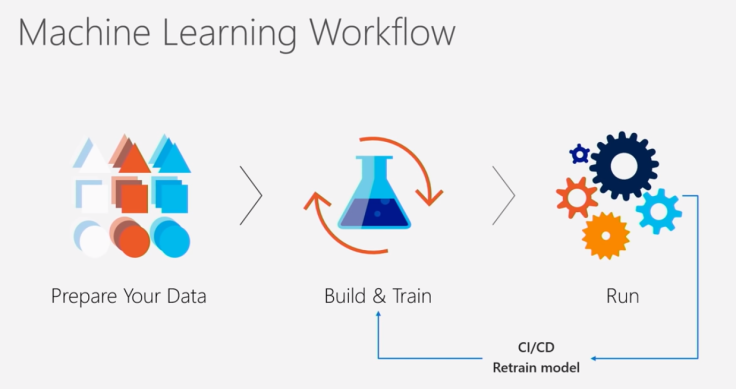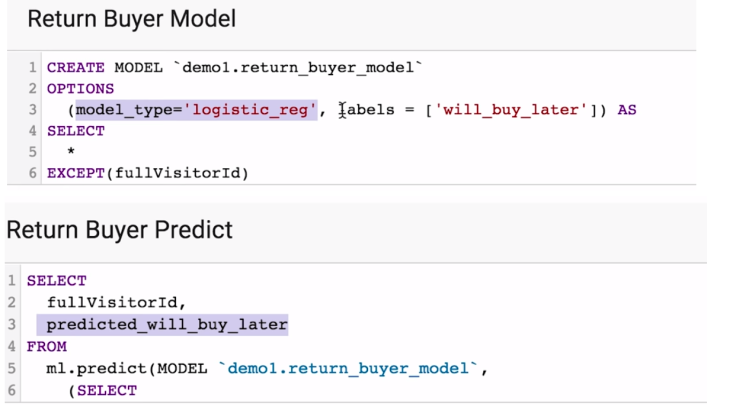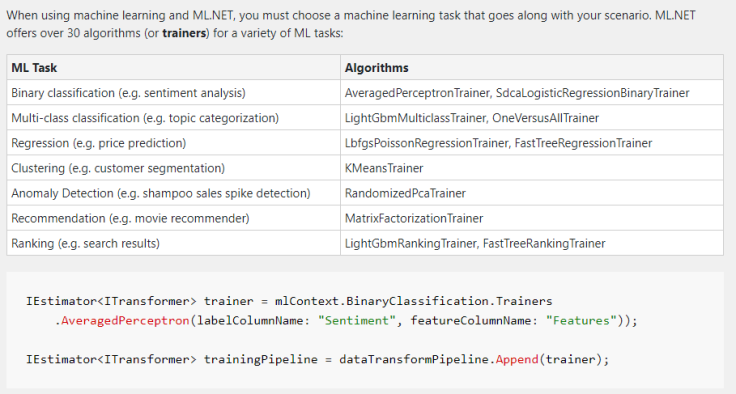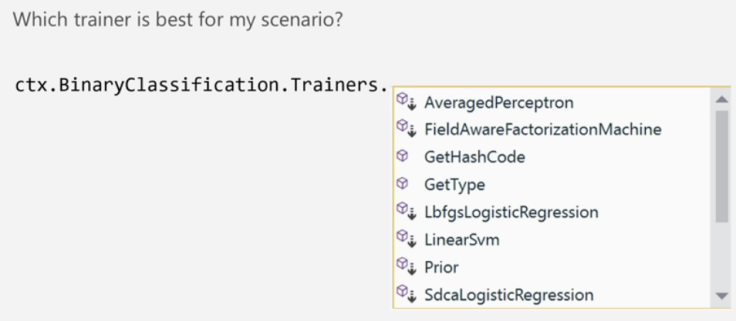1. Introduction
AI/ML is not a futuristic topic anymore. For example the company Icons8 use AI/ML to generate headshots. This put stock photo companies on notice (here).
Developers and BI analysts can use AI/ML tools now, it is not only for Data Scientists.
This blog post shows ML.NET, which is a collection of cross-platform libraries and CLI to create and train ML models.
This post is a summary of the following video and this tutorial.
2. Important Concepts
- ML helps to solve challenging programming questions.
- Example of challenging programming questions:
- Write a function which takes an image and tells if there is a face on it.
- Write a function to tell the price of the shirt based on textual description?
- Write a function try to play rock paper scissors with a machine (think about different skin tones, different hand sizes, etc).
- Machine Learning creates a function (called Model) using sample data. In Machine Learning, you develop/train you custom ML models to infuse custom machine learning into their applications.
- A model is the algorithm
- Interpreting the data is tricky. What do you do if you’re told your 82% healthy
A more comprehensive answer would be, «here the characteristics you can improve, bla bla» - There are Supervised and non-supervised training.
- In supervised learning you use algorithms:
- Regressions.
- Clusters.
- Classification.
- Classification.
- Machine Learning is: unsupervised training
- In supervised learning you use algorithms:
- There are tons of out of the box ML Trainers (described in the Tooling section below).
3. Machine Leaning Stages
There is a training VS running

4. Working Samples for Developers
Clone the ML.NET sample git repo (link here). Some facts about the code:
-
- About Data Inputs:
- In this example there are two datasets:
- One to train your model (called wikipedia-detox-250-line-data.tsv, which is larger) and test data (called wikipedia-detox-250-line-test.tsv) to determine how well model is performing.
- There is also an input class called SentimentIssue to model the data in file: wikipedia-detox-250-line-test.tsv
- In this example there are two datasets:
- About Data Processing:
- Then you need to transform data (a.k.a. Featurize Text) for ML algorithms to understand it.
- In AI/ML, arrays are the way how Images, text, etc are represented (more on that here).

- Then you need to transform data (a.k.a. Featurize Text) for ML algorithms to understand it.
- About Data Inputs:
-
- Time for Predictions:
- The whole point about building a model is to use it for Predictions.
- Last but not least, you evaluate the accuracy of the model.
- For the record, a model is a zip file. The zip file is what you deploy to PROD.
5, ML Tools
There are lots of ML/AI tools, in this post we provide below only a general introduction to ML.NET and BigQuery ML.
5.a ML.NET
There is a complete post about ML.NET [here], but in general with ML.NET you can do the following general tasks:
- Automated Model Generation
- Classification
- Binary Classification
- Sentiment Analysis
- Spam detection
- Credit Card Fraud Detection
- Hearth Disease Prediction
- Multi-class classification
- GitHub Labelers
- Iris Flowers Classification
- MNIST
- Support Text Classification
- Models for Regression (to answer questions like how much? how many?)
- Price Prediction
- Sales Forecasting
- Demand Prediction
- Classification
- Recommendation
- Product Recommendation
- Movie Recommendation (Matrix Factorization)
- Movie Recommendation (Field Aware Factorization Machines)
- Clustering
- Customer Segmentation
- IRIS Flowers Clustering
- Time Series Forecasting
- Ranking, etc.
- Rank Search Engine Results
- Anomaly Detection
- Sales Spike Detection
- Power Anomaly Detection
- Credit Card Fraud Detection
- Computer Vision
- Training
- High Level API
- Featuizer Estimator
- Predictions (Pretrained TensorFlow model scoring)
- Object Detection
- Training
- Cross Cutting Scenarios
5.b BigQuery ML
In BigQuery ML, only two steps are needed to create a model and make predictions based on it, the syntax is inspired in SQL.

Thanks,
Javier Caceres


Deja un comentario